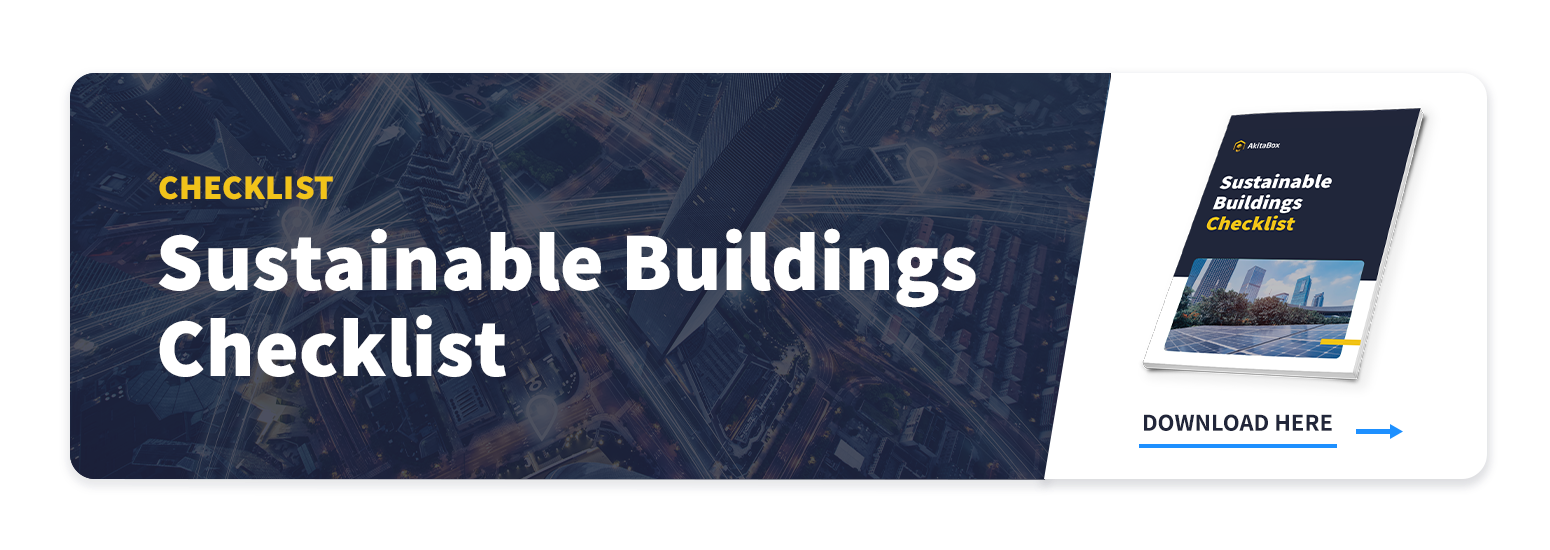If you’ve managed to avoid watching the news or shun closely following politics in the US lately, first off, tell us how you do it. Secondly, “going green” — the process of making buildings and systems more environmentally sustainable –is a hot topic that is talked about in almost every aspect of our lives. From the food we eat, to the cars we drive, to knowing if I can recycle my greasy pizza box, going green has become a slogan we can’t escape.
This shift to go green goes beyond just what we do, but where we do it. Buildings and facilities use a lot of energy to keep the lights on and assets running. While organizations and executive leadership are pushing for new buildings and new construction to be more sustainable, this doesn’t account for the millions of older buildings still being used today.
When it comes to going green, it isn’t just about saving the environment. There are significant business impacts to more sustainable facility management and to converting to green buildings in your portfolio. Let’s take a look at how green buildings are good for more than just the environment.
What Are Green Buildings?
Hate to break it to you, but painting your buildings green isn’t going to cut it here. Sorry about that. A “green building” is any building that reduces negative impacts and creates positive or neutral impacts on the climate and our environment. This can occur in the design, construction, or operation of the building.
While the term green buildings was first coined in 1998, in practice they have really been picking up steam in the last couple years. According to CBRE, in 2018, 41% of office space in the 30 largest US metro areas was green certified. Not too bad. Unless this was a math test.
There are two major certifications that are the must haves for a green building:
- Energy Star is a program run by the EPA that promotes energy efficiency. Buildings are given a score from 1-100, with a 75 or above qualifying them to be certified. The certification process happens annually. Learn more on how you can apply to certify your buildings.
- Leadership in Energy and Environmental Design (LEED) is a globally recognized symbol of sustainability achievement and leadership. Certifications cover all building types and phases ranging from design to operations. Learn more about getting your buildings LEED certified.
Being certified in either or both provides proof that your buildings are meeting higher standards. You even get a sticker to put on the front of the building to show off your accomplishment. Who doesn’t love stickers??
Benefits of Sustainable Buildings
Sustainable buildings are more than just good for ice caps and panda bears. They can drastically reduce your operations and energy costs. Even little projects like replacing lights with energy efficient bulbs can save hundreds of dollars every year. Lower operation costs mean a better NOI and CAP rate on your buildings. In a 2016 study, building owners reported that green buildings commanded a 7% increase in asset value over traditional buildings.
The health and wellbeing of occupants and staff is also improved in sustainable buildings. Better indoor air quality can help reduce sick time and even improve productivity. This goes not just for occupants and customers, but your building operators too who are working in the buildings everyday. A more focused team will be more productive and more attentive, improving operational efficiency and reducing risk.
It’s tough to attract new customers. Especially in a post-COVID world you’ll need every advantage you can get to bring people back to your buildings. Having an EPA Energy Star or LEED certified building makes your buildings more competitive in your markets. Companies and people are looking for better working environments. Slapping one of those stickers on the front of your building is a great way to visibly show the quality of your building.
Easy Steps to Sustainable Building Operations
There are some easy steps your building operators can take to implement sustainable processes across your buildings. Save money. Improve the occupant experience. Increase the value of your buildings. Who wouldn’t want to do that?
Track energy usage against historical data. You need to know what your buildings use to understand how it can be improved. Once you have a baseline, you can compare it to past energy bills to understand changes over time.
Stay on top of preventive maintenance in your buildings. Proactive maintenance is critical to keeping assets at optimal performance. Bette maintained assets have a longer useful life and avoid becoming energy “vampires’ in your buildings.
Start tackling your deferred maintenance projects. As deferred maintenance lists grow, it can take its toll on the condition and performance of your buildings and assets. Having current condition and risk data can help you build capital budgets for your facilities that will improve the quality and lower risk.
Upgrade facility assets and buildings with energy efficiency in mind. As facilities and assets age, they need more energy to operate. Assets wear down. Windows lose seal. More efficient products are created. Looking at the energy efficiency gained from different projects around your buildings can help generate an return on investment number that helps justify the investments needed.
Plan your next capital budget with sustainable buildings in mind
Going green isn’t just about saving the planet. It can have a major impact on the quality and value of your buildings. While it does take investment, with the right data and proper planning you can start to implement more sustainable projects and operations.
What other benefits do sustainable buildings bring to your organization? Let us know in the comments!
